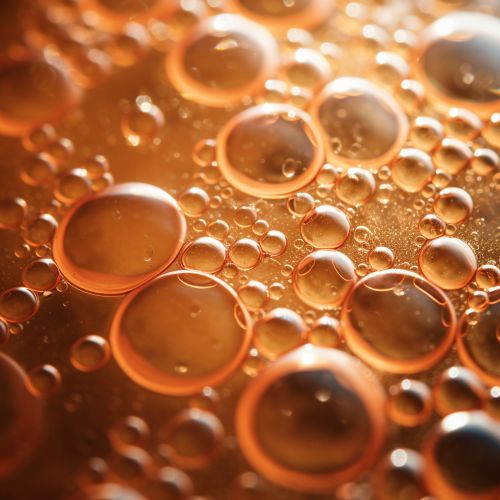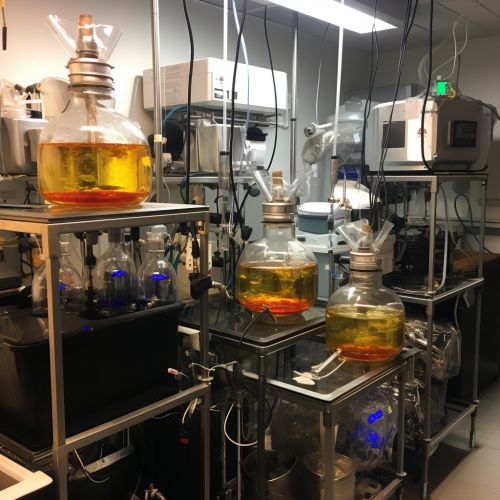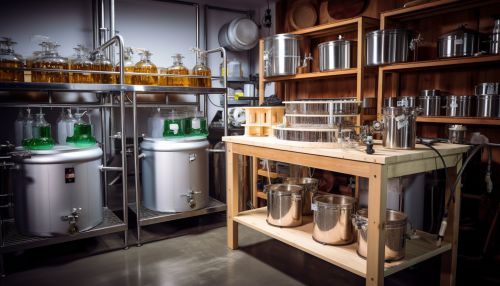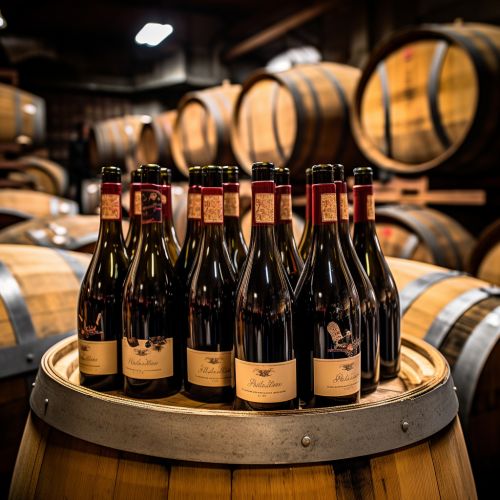Alcoholic Fermentation
Introduction
Alcoholic fermentation, also known as ethanol fermentation, is a biological process in which sugars such as glucose, fructose, and sucrose are converted into cellular energy and thereby produce ethanol and carbon dioxide as metabolic waste products. This process is anaerobic, meaning it occurs in the absence of oxygen. It is an important and ancient process used in the production of alcoholic beverages, bread, and some dairy products. Alcoholic fermentation is carried out by yeasts and some other fungi and bacteria1(#References).


Biochemistry of Alcoholic Fermentation
The biochemistry of alcoholic fermentation is a complex process that involves the breakdown of sugars by yeasts. The process begins with the sugar being converted into glucose and fructose, which are then broken down into pyruvate through the process of glycolysis. This process produces two molecules of ATP, two molecules of pyruvic acid and two high energy carrying molecules of NADH2(#References).
The pyruvate is then converted into carbon dioxide and a two-carbon compound called acetaldehyde. This step is known as decarboxylation. The acetaldehyde is then reduced by NADH to produce ethanol, regenerating the NAD+ needed for glycolysis to continue. The overall reaction can be represented as follows:
C6H12O6 (glucose) → 2 C2H5OH (ethanol) + 2 CO2 (carbon dioxide)


Role of Yeasts in Alcoholic Fermentation
Yeasts, especially Saccharomyces cerevisiae, play a crucial role in alcoholic fermentation. These single-celled fungi are the primary agents responsible for the conversion of sugars into alcohol. They have the ability to ferment sugars in the absence of oxygen, a trait that has been exploited by humans for thousands of years in the production of alcoholic beverages and leavened bread3(#References).
Applications of Alcoholic Fermentation
Alcoholic Beverages
The production of alcoholic beverages is one of the most common applications of alcoholic fermentation. The process is used in the production of wine, beer, and spirits. In the case of wine, the sugar in grapes is fermented by yeast to produce wine, carbon dioxide and heat. In beer brewing, malted grains (usually barley) provide the sugar source that is fermented4(#References).


Bread Making
Alcoholic fermentation is also essential in the production of bread. The yeast used in bread making ferments the sugars present in the dough, producing carbon dioxide and ethanol. The carbon dioxide gas is trapped within the dough, causing it to rise and giving bread its characteristic texture5(#References).
Biofuel Production
Alcoholic fermentation is also used in the production of biofuels. Ethanol produced from the fermentation of sugars derived from plant material, such as corn or sugarcane, can be used as a renewable fuel source. This bioethanol is a form of renewable energy that can be used as an alternative to fossil fuels6(#References).


See Also
References
- 1 "Alcoholic fermentation." Encyclopædia Britannica. Encyclopædia Britannica, Inc., 2018. Web. 20 Dec. 2018.
- 2 Nelson, D.L., Cox, M.M. Lehninger Principles of Biochemistry. 7th Edition. W.H. Freeman and Company, 2017.
- 3 "Yeast and fermentation." The American Society of Brewing Chemists. ASBC, 2018. Web. 20 Dec. 2018.
- 4 "The Science of Winemaking." Wine Spectator. M. Shanken Communications, Inc., 2018. Web. 20 Dec. 2018.
- 5 "The Science of Bread Making." Exploratorium. Exploratorium, 2018. Web. 20 Dec. 2018.
- 6 "Biofuels." National Geographic. National Geographic Society, 2018. Web. 20 Dec. 2018.
